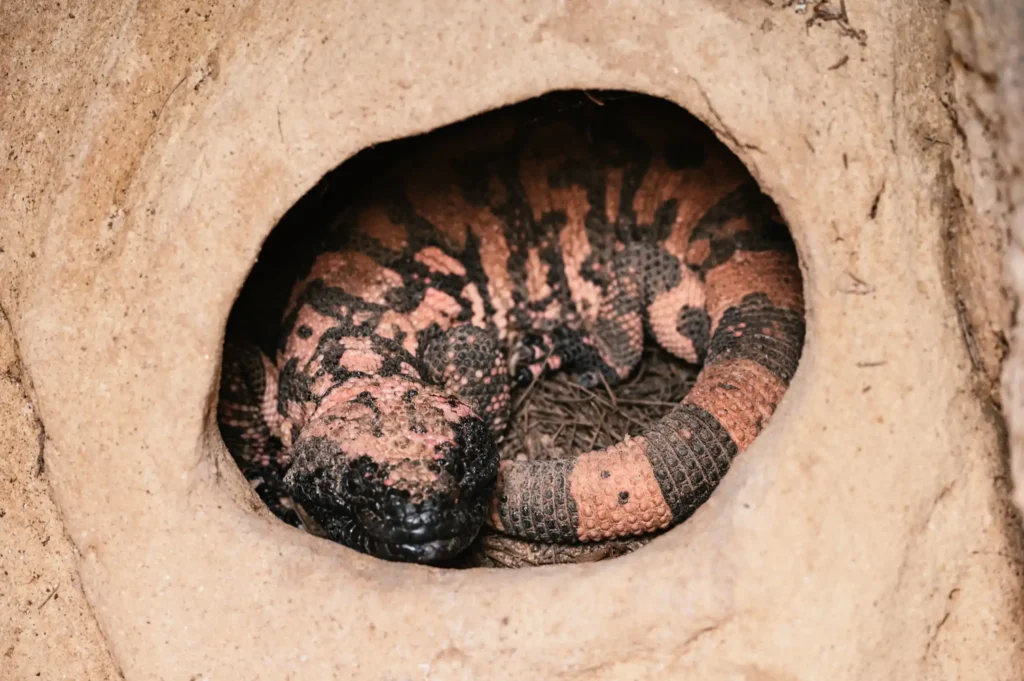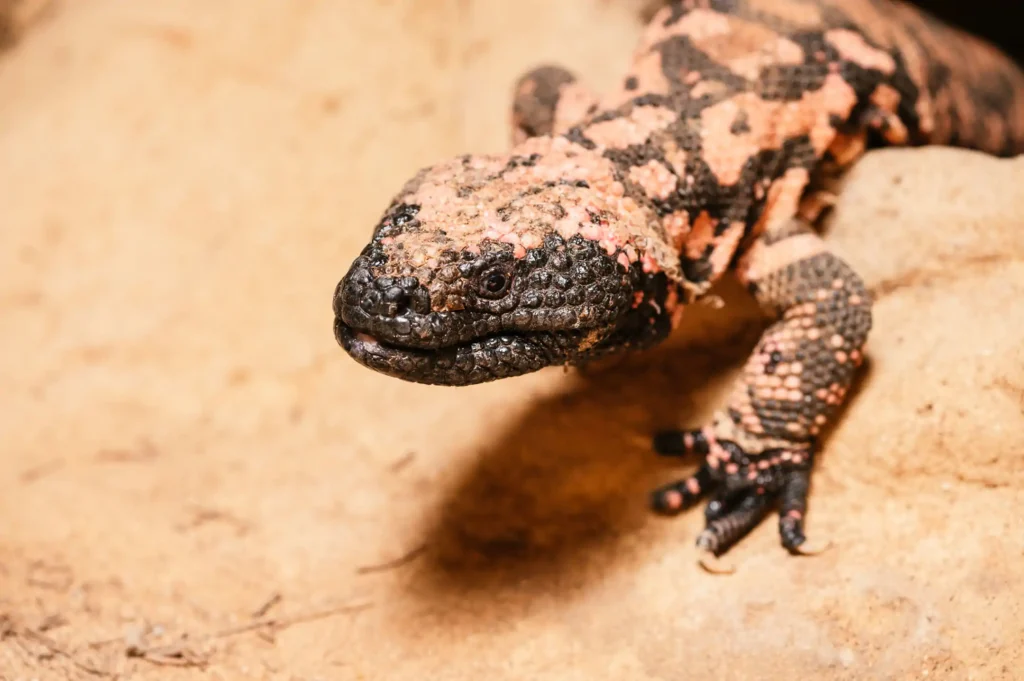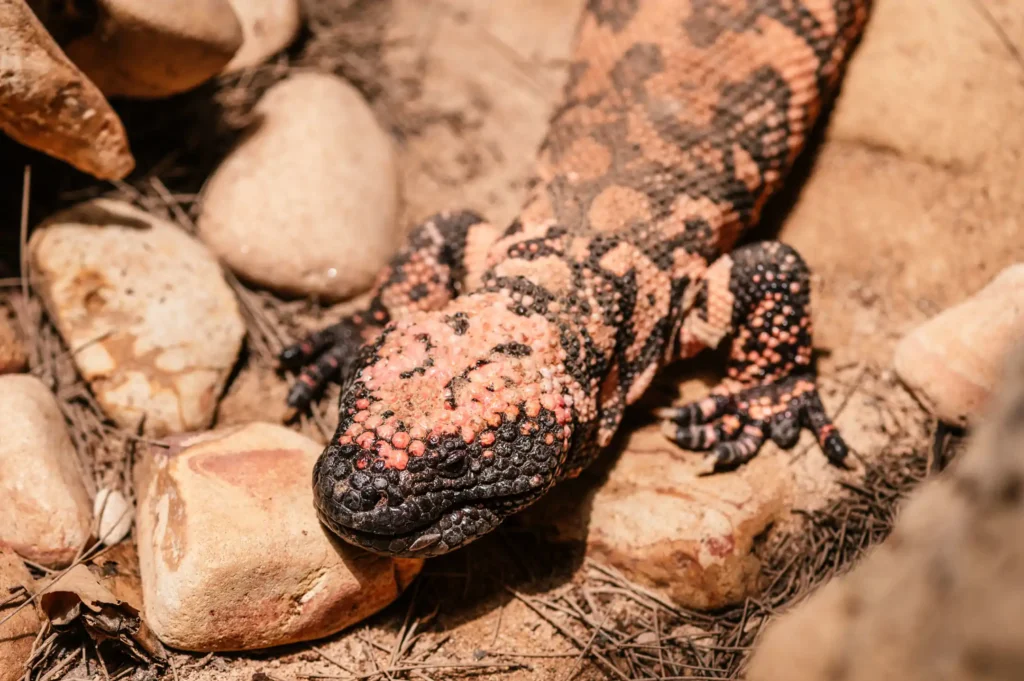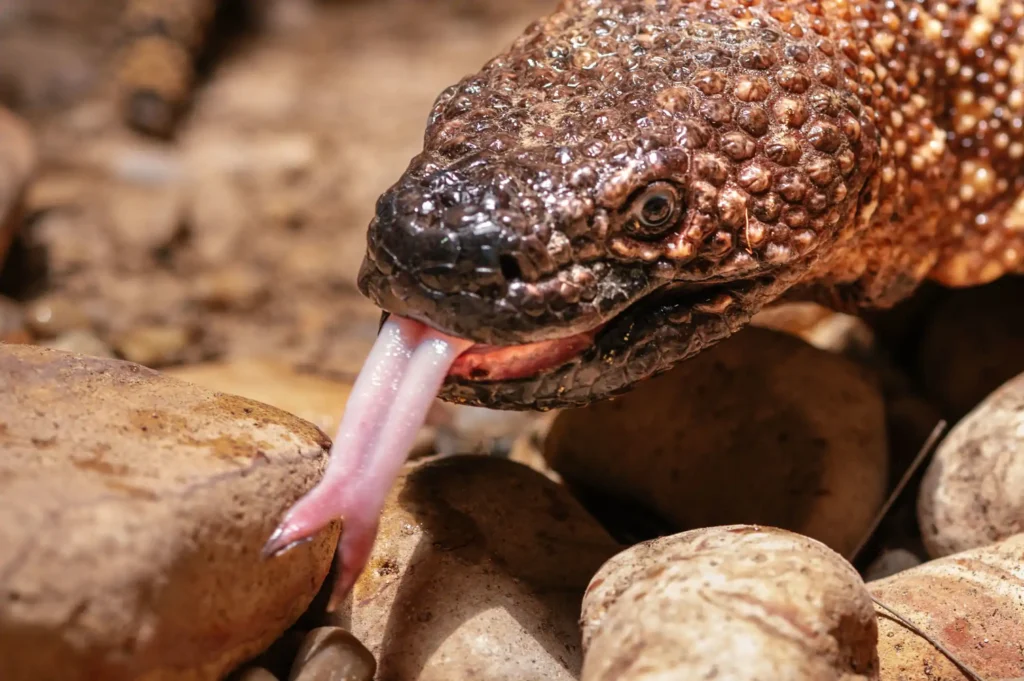It is the largest lizard in the United States and the only venomous lizard endemic to the area.
Physical features
Four-legged reptile, 30-60 cm long and weighing up to 2 kg.
Predominantly black with areas where the scales are pink, orange or yellow, becoming more vivid the younger the specimen is.
Thin and long tail that becomes wide when it accumulates fat in periods of abundant food to withstand times of scarcity. It will not grow back if it breaks off as happens in other species of lizards.
It has sharp claws and long legs for digging its burrows.
Its tongue is black and thin and is used as a sense of smell as in many other reptiles such as snakes.
Hábitat
It is found in desert areas and scrub forests in the southwestern United States and northern Mexico. They can be found under rocks, in the dens of other animals or in dens they have made themselves.
Diet
It is carnivorous and it has a varied diet that includes small young mammals, eggs and birds.
They eat infrequently, in the wild only 5 to 10 times a year, but when they do eat, they can gobble up to a third of their body mass.
They use their acute sense of smell to locate their prey and may climb trees and cacti to capture bird eggs, their preferred food.
Although they are poisonous, they do not usually use the venom produced by their modified salivary glands for hunting; its function is mainly defensive. This neurotoxin affects humans in the event of an accidental bite, but rarely triggers a lethal situation, as it is produced in small quantities.
Reproduction
The female usually lays between 2 and 12 eggs between July and August, and after an incubation period of between 150 and 250 days, the young hatch at a size of about 13cm and weighing 40g. This species becomes sexually matures between 3 and 5 years of age and will live for about 20 years in the wild.
Behaviour
These animals have crepuscular and nocturnal habits, due to the hostile climate in which they live, with temperatures exceeding 40ºC and a great shortage of humidity.
They can spend up to 95% of their time inactive, saving energy and humidity, only to come out on rare occasions to look for food and store fat in their tails to survive in winter.
Summer is their most active season, as they leave their burrows more frequently in search of mating partners.
Threats
The destruction of their habitat is the great threat to these reptiles, both due to the advance of urban centres and the construction of roads.
It is considered a protected species and hunting is prohibited. In 1952 it was the first poisonous species to be officially protected.
Status and conservation
Species assessed on the IUCN Red List and listed as Near Threatened and protected by the CITES Convention and listed in Annex II of the Convention.





